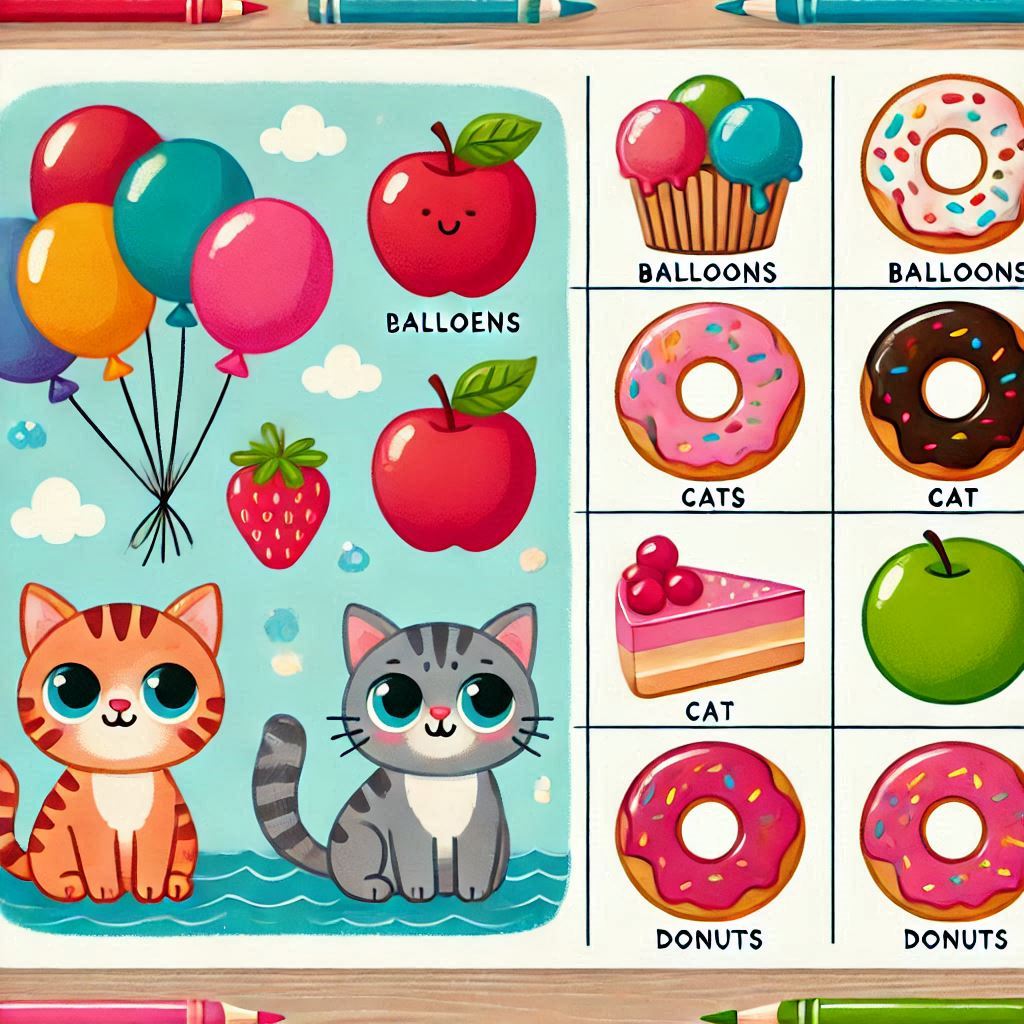Matching Worksheet: Fun Learning Tool

Matching worksheets are an exciting and interactive way to engage learners of all ages. Whether used in classrooms, at home, or in therapy sessions, these worksheets serve as powerful tools to improve cognitive abilities, enhance memory, and foster creativity. Their universal appeal lies in their ability to combine education with entertainment, making the learning process both effective and enjoyable.
Designed with simplicity and adaptability in mind, matching worksheets come in various formats tailored to specific topics and age groups. From young children matching pictures to words, to adults engaging in more complex logic puzzles, the possibilities are virtually endless. This versatility ensures that matching worksheets remain relevant and beneficial across different educational levels and environments.
What Are Matching Worksheets?
Matching worksheets are structured activities where participants pair related items from two sets. For instance, a worksheet might display pictures of animals on one side and their corresponding habitats on the other. The participant’s goal is to draw connections or match each pair correctly. This simple yet effective format can be adapted to suit a variety of learning objectives, from basic vocabulary to advanced problem-solving tasks.
Benefits of Matching Worksheets
The advantages of incorporating matching worksheets into learning routines are numerous:
- Cognitive Development: Matching activities stimulate brain function, promoting skills like critical thinking, problem-solving, and pattern recognition.
- Memory Enhancement: Associating two related items strengthens memory retention, helping learners recall information more efficiently.
- Hands-On Learning: These worksheets encourage active participation, keeping learners engaged and motivated.
- Customizability: Matching worksheets can be easily tailored to fit different subjects, themes, or difficulty levels, making them accessible for all learners.
- Stress-Free Learning: Their playful nature creates a relaxed learning environment, reducing stress and boosting confidence.
Types of Matching Worksheets
Matching worksheets can be categorized into several types, depending on their purpose and design:
1. Picture-to-Word Matching
Ideal for young learners, this type involves matching images to their corresponding names or descriptions. For example, matching pictures of fruits to their names.
2. Word-to-Definition Matching
Commonly used in language learning and vocabulary exercises, participants match terms with their correct definitions or synonyms.
3. Concept Matching
These worksheets focus on pairing related concepts, such as matching countries to their capitals or historical events to their dates.
4. Problem-Solution Matching
Aimed at older learners, this type presents scenarios alongside their potential solutions, fostering critical thinking and decision-making skills.
How to Use Matching Worksheets Effectively
To maximize the benefits of matching worksheets, consider the following tips:
1. Know Your Audience
Understand the age, interests, and learning goals of your audience to select or create worksheets that resonate with them. For younger children, colorful and visually engaging designs work best, while older learners may prefer more challenging tasks.
2. Set Clear Instructions
Ensure the instructions are straightforward and easy to follow. If necessary, provide examples to demonstrate the matching process.
3. Incorporate Variety
To keep the activity engaging, introduce a mix of matching formats and themes. Rotating topics helps sustain interest and prevents monotony.
4. Use Worksheets as Collaborative Tools
Matching worksheets are excellent for group activities, fostering teamwork and communication among participants.
5. Combine with Other Activities
Enhance the learning experience by combining matching worksheets with complementary activities, such as discussions, games, or hands-on projects.
Creating Your Own Matching Worksheets
With basic tools and a bit of creativity, anyone can design matching worksheets. Here’s how:
- Identify the Objective: Determine the purpose of the worksheet and the skills you want to target.
- Choose a Theme: Select a theme that aligns with your learning goals and appeals to the audience.
- Design the Layout: Arrange the items in two columns, ensuring there’s enough space for participants to draw connections.
- Include Visuals: Add images or illustrations to enhance engagement, especially for younger learners.
- Test and Refine: Pilot the worksheet with a small group and make adjustments based on their feedback.
Why Matching Worksheets Matter
In today’s fast-paced world, finding effective and enjoyable ways to learn is more important than ever. Matching worksheets strike the perfect balance between education and entertainment, making them a valuable resource for teachers, parents, and learners alike. By engaging multiple senses and encouraging active participation, these worksheets foster a deeper understanding of the subject matter and help build lifelong learning skills.
Conclusion
Whether you’re teaching a classroom full of students, guiding your child at home, or seeking innovative methods to facilitate learning, matching worksheets are a versatile and impactful choice. Their simplicity, adaptability, and effectiveness ensure they remain a favorite tool for educators and learners worldwide. So why not give them a try? Dive into the world of matching worksheets and discover the endless possibilities they offer!